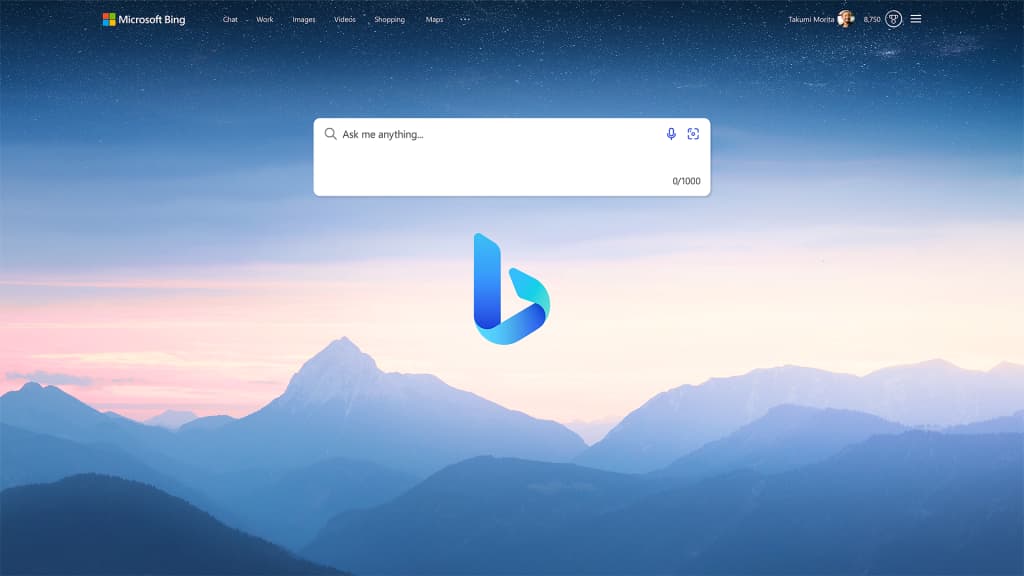How Does Bing Search Engine Work? Detailed Guide

Bing is a web search engine developed by Microsoft. It’s designed to help users find information quickly and efficiently. When you type a query into the search bar on the Bing homepage, the search engine uses advanced algorithms to provide relevant search results. Bing is the second largest search engine after Google, making it a significant player in the search engine market.
In this article, I will try to give you a simple explanation of how Bing search works and what the main differences are from other big search engines like Google.
Realizing how search engines like Bing work is crucial for anyone who uses the internet. Search engines are the gateway to information on the web. They help us find websites, images, videos, news, and much more.
Table of Contents
By knowing how search engines operate, you can improve how you search for information and even optimize your own website to appear higher in search results. So, let’s begin.
How Is Bing Search Engine Working? In Short
Bing search engine works by using a combination of crawling, indexing, and ranking processes to deliver search results.
Here’s a step-by-step breakdown of how it functions:
- Crawling: Bing uses automated programs called bots or spiders to scan the internet. Such bots visit web pages, follow links, and gather information about each page they visit. For example, when you publish a new blog post, Bing’s bots will eventually find it and read its content.
- Indexing: After crawling a web page, Bing stores and organizes the content in its index. Think of the index as a massive digital library. Each time Bing crawls a page, it adds a new “book” to this library, containing the page’s content and metadata. Consequently, this step ensures that the search engine has up-to-date information about millions of web pages.
- Ranking: When you perform a search, Bing quickly scans its index to find relevant results. It uses a ranking algorithm to sort these results based on various factors like relevance, quality, and user engagement. In other words, if you search for “best pizza in New York” Bing will rank the pages it thinks are most helpful based on reviews, ratings, and other criteria.
In one of the next blocks, I’ll explain how this works in detail.
Basic Functionality of Bing Search Engine
The primary goal of Bing is to connect users with the information they seek as efficiently as possible. When you enter a query into the search bar, Bing looks through its index to find pages that match the words in your query.
It then ranks those pages to show the most relevant results first. Furthermore, this process happens in milliseconds, providing you with a list of useful links almost instantly.
Importance of Bing in the Search Engine Market
Bing is a vital player in the search engine market for several reasons:
- Diverse Search Results: Bing offers different search results compared to other search engines, which can be beneficial for finding unique information. For example, if you’re researching a niche topic, Bing might present results that other search engines overlook.
- Integration with Microsoft Services: Bing is integrated with various Microsoft services like Bing Maps, Bing Shopping, and even Bing Chat. This integration can enhance your search experience by providing more tailored and comprehensive results. For instance, if you have a Microsoft account, Bing can personalize your search results based on your search history and preferences.
- Advanced Search Options: Bing provides advanced search options that allow users to filter results by date, region, language, and more. This feature can be incredibly useful when you need specific information quickly.
- Second Largest Search Engine: As the second largest search engine, Bing attracts a significant number of users. Therefore, this popularity means that optimizing your website for Bing (Bing SEO) can increase your site’s visibility and drive more traffic.
- Support for Advertisers: Bing offers robust advertising options through Bing Ads. Businesses can reach a large audience by advertising on Bing, making it an essential platform for online marketing.
Hence, the Bing search engine is a powerful tool that helps users find information quickly and effectively. Hence, knowing how it works can improve your search skills and help you optimize your website for better visibility.
Comprehending the basics of Bing’s functionality can enhance your online experience, even if you’re a casual user or a webmaster.
What is a Bing Search?

A Bing search is the process of using the Bing search engine to find information on the internet. When you visit the Bing homepage and type a query into the search bar, Bing quickly scans its index of web pages to provide you with relevant search results.
The listed results can include websites, images, videos, news articles, and more. Bing, developed by Microsoft, aims to make searching the web easy and efficient for everyone.
Differences Between Bing and Other Search Engines
While all search engines serve the same primary purpose of helping users find information, there are several key differences between Bing and other search engines like Google Search:
- Search Interface and Design: The Bing homepage is known for its visually appealing backgrounds, which change daily and often feature stunning photographs. This visual approach can make the user experience more engaging. For instance, while Google Search uses a minimalist design, Bing’s colorful and dynamic homepage might attract users who prefer a more visually rich interface.
- Search Results and Features: Bing offers unique search features that distinguish it from other search engines. For example, Bing integrates with other Microsoft services, allowing users to access Bing Maps, Bing Shopping, and Bing Chat seamlessly. Additionally, Bing often provides more detailed previews of web pages directly in the search results, which can help users quickly determine if a link is worth clicking.
- Image and Video Search: Bing is renowned for its robust image and video search capabilities. Users can find high-quality images and videos with ease, thanks to Bing’s advanced search options. To give an example, if you’re searching for high-resolution photos for a presentation, Bing’s image search might yield more relevant results compared to other search engines.
- Market Position and User Base: While Google is the most popular search engine globally, Bing is the second largest search engine. This means Bing has a significant user base, and optimizing your website for Bing can help reach a broader audience. Therefore, for businesses, this is particularly important as it opens up additional avenues for online visibility through Bing SEO.
- Privacy and Search History: Bing and Microsoft offer different privacy settings compared to other search engines. Bing users can manage their search history and privacy settings through their Microsoft account, providing a different approach to data security and user privacy. So, this can be a deciding factor for users who are particularly concerned about their online privacy.
- Integration with Microsoft Ecosystem: One of Bing’s standout features is its integration with the Microsoft ecosystem. In particular, using a Microsoft account, users can sync their search history across devices, making it easier to continue their searches from any device. Additionally, Bing is the default search engine for Microsoft’s Edge browser and is deeply integrated with Windows operating systems.
Practical Scenarios
Imagine you’re planning a vacation and need to find a hotel. Using Bing, you can type “best hotels in Paris” into the search bar. Thanks to its integration with Bing Shopping, Bing will quickly present you with a list of hotels, complete with images, reviews, and prices. You can also use Bing Maps to see the hotel locations and get directions. Consequently, this seamless integration of search features can save you time and provide a comprehensive overview of your options.
Another example is using Bing for educational purposes. Suppose you’re a student researching climate change. When you search Bing, you might find not only articles and websites but also educational videos and recent news updates on the topic. As a result, Bing’s ability to deliver diverse types of content can enhance your research experience.
Bing’s ability to index public posts and profile previews from platforms like Facebook or Reddit means even casual mentions can appear in search results. If old posts, comments, or tags are showing up and causing problems, help is available to take down those unwanted traces from social platforms.
A Bing search is a powerful tool for finding information online. Acknowledging the unique features of Bing compared to other search engines can help you make the most of your web searches, whether you’re looking for general information, shopping, or conducting detailed research.
Bing Search Engine. Beginner’s Guide
To understand how Bing search engine works, let’s break down the process into simple, digestible steps. It all starts with crawling and indexing.
Explanation of Web Crawling
Web crawling is the process used by search engines to discover new and updated content on the internet. Bing uses automated programs called web crawlers or spiders to browse the web and collect information about web pages. The stated crawlers follow links from one page to another, just like you might click on links while browsing the internet.
How Bing’s Web Crawlers Discover New and Updated Content?
Bing’s web crawlers are always on the lookout for new content. They visit websites, read their content, and follow links to other pages. This way, Bing can keep track of all the pages on the web.
To illustrate, when you publish a new blog post, Bing’s crawlers will eventually find it by following links from other websites or through direct submission via webmaster tools.
The Process of Indexing Content
Once Bing’s crawlers find a new page, the next step is indexing. Indexing is the process of analyzing the content on the page and storing it in Bing’s database.
This database is like a giant library where each page is a book. When you search for something, Bing looks through its library to find the most relevant books (web pages) to show you.
Let’s break this process into steps for better understanding.
Step 1: Discovering Content
Bing finds new content in several ways. First, it follows links from other web pages. If a popular website links to a new page, Bing’s crawlers will follow that link and discover the new content.
Second, website owners can submit their pages directly to Bing using tools like Bing Webmaster Tools. This helps ensure Bing finds and indexes their content quickly.
The Role of Sitemaps and Webmasters
Sitemaps play a crucial role in helping Bing discover new content. A sitemap is a file that lists all the pages on a website. Webmasters (people who manage websites) create sitemaps to help search engines like Bing find and index their content more efficiently. For instance, if you run an online store, you would create a sitemap listing all your product pages to make sure Bing can find them.
Step 2: Crawling Content
When Bing’s crawlers visit a web page, they read the content, follow links, and collect data about the page. This includes text, images, and metadata (information about the page like the title and description). During the process, the crawlers move from page to page, building a comprehensive map of the web.
Frequency and Depth of Crawling by Bingbot
Bing’s crawlers, known as Bingbot, visit websites at different frequencies depending on how often the content changes. E.g., news websites are crawled more frequently because they update their content regularly.
On the other hand, a static page that doesn’t change often might be crawled less frequently. Bingbot also determines the depth of crawling, meaning how many links deep it will go from the starting page.
Step 3: Storing and Organizing Content
After crawling a page, Bing indexes the content. This means it analyzes the content to understand what the page is about and then stores this information in its database. Bing’s index is a massive repository of web pages that the search engine can quickly access when you perform a search.
The Role of Bing’s Algorithms in Organizing Content
Bing uses complex algorithms to organize and rank the indexed content. The described algorithms consider various factors like relevance, content quality, and user engagement to determine the order of search results. E.g., if you search for “best pizza in New York” Bing’s algorithms will look for pages with high-quality content, good user reviews, and relevant keywords to provide you with the best results.
Actual Instances
Imagine you’re looking for a recipe for chocolate cake. You type “chocolate cake recipe” into the Bing search bar.
Here’s what happens behind the scenes:
- Crawling: Bingbot has already visited many cooking websites and discovered various chocolate cake recipes.
- Indexing: Bing has indexed these recipes, analyzing the content to understand what each recipe page offers.
- Ranking: When you search, Bing’s algorithms quickly sort through the indexed recipes to show you the best ones based on factors like relevance, user ratings, and quality of the content.
Through deciphering how Bing search engine works, you can see how the search engine helps you find the most relevant and high-quality information quickly and efficiently.
Whether you’re a casual user or a webmaster, knowing this process can enhance your online experience and help you make the most of Bing’s search capabilities.
Main Bing Search Algorithms

To understand how Bing search engine works, it’s essential to know about its ranking algorithms and how they ensure the relevance of search results. The referred algorithms are the core of how Bing works to provide you with the most accurate and helpful information.
Overview of Bing’s Ranking Algorithms
Bing uses complex algorithms to rank the pages it indexes. The mentioned algorithms look at many factors to decide which pages should appear at the top of search results. The goal is to show the most relevant and high-quality content first. Bing’s algorithms are designed to understand what you are looking for and to match that with the best available content on the web.
Several factors influence how Bing ranks search results. The highlighted, include the relevance of the content to the search query, the quality and authority of the website, the freshness of the content, and user engagement metrics like click-through rates and dwell time.
For example, a well-written, frequently updated blog with many user interactions is likely to rank higher than a rarely updated website with poor content.
Step 1: Analyzing User Queries
When you type a query into the Bing search bar, Bing’s algorithms analyze your words to understand what you are looking for. This process involves natural language processing (NLP), which helps Bing understand the context and intent behind your search.
As a case in point, if you type “best Italian restaurants near me” Bing understands that you are looking for highly-rated Italian restaurants close to your current location.
Natural language processing allows Bing to interpret search queries more accurately. NLP helps Bing to understand synonyms, spelling variations, and even complex phrases. This technology ensures that even if you don’t type your query perfectly, Bing can still provide relevant results.
For instance, if you type “Italian food nearby” Bing knows to show you Italian restaurants even though you didn’t use the exact match keywords.
Step 2: Matching Queries with Indexed Content
Once Bing understands your query, it searches its index for pages that match your search terms. The index is like a vast library of web pages that Bing has crawled and stored. Bing uses keywords from your query to find pages that contain similar terms. To illustrate, if you search for “chocolate cake recipe” Bing will look for pages that include these keywords in their titles, headings, and content.
Keywords play a crucial role in matching queries with content. However, Bing also looks at the overall quality of the content. High-quality, well-organized, and informative pages are more likely to rank higher. By way of illustration, a detailed recipe with step-by-step instructions, user reviews, and high-quality images will rank better than a simple, poorly written recipe.
Step 3: Ranking and Displaying Results
Bing uses several criteria to rank search results. Such include the relevance of the content, the authority of the website, user engagement metrics, and the freshness of the information.
Bing’s ranking algorithm considers how well a page matches the search query and how useful it is likely to be for the user. For example, a news article about a recent event will rank higher than an older article on the same topic.
If an old news article with your name is still being shown—long after the context no longer matters—you might be able to request its removal. When content is outdated, misleading, or causing damage, there are options to get those articles taken down or excluded from results.
Display of Search Results on Bing’s SERP (Search Engine Results Page)
The search results are displayed on Bing’s Search Engine Results Page (SERP) in a specific order, with the most relevant results at the top. Each result usually includes a title, a snippet of the content, and a link to the page.
Bing also displays additional features like images, videos, maps, and local business information when relevant. To demonstrate, if you search for “coffee shops near me” Bing will show a map with nearby coffee shops, their ratings, and links to their websites.
Real-Life Example
Imagine you are looking for information on how to improve your sleep quality. You type “how to sleep better” into the Bing search bar. Here’s what happens:
- Analyzing User Queries: Bing understands you are looking for tips and advice on improving sleep.
- Matching Queries with Indexed Content: Bing searches its index for pages with content related to better sleep, considering keywords like “sleep tips” “improve sleep” and “better sleep”.
- Ranking and Displaying Results: Bing ranks the pages based on relevance, content quality, and user engagement, then displays the best results at the top of the SERP. You see articles, videos, and even local listings for sleep clinics.
By mastering Bing’s main search algorithms, you can see how Bing works to provide you with accurate and useful information quickly. In the event that you’re a regular user or someone looking to optimize your content for Bing, knowing these steps can help you make the most of this powerful search engine.
Want to Remove Information from Bing?
Are you worried about your private information appearing in Bing search results? Take control of your online presence with NonDetected!
Our expert team specializes in online reputation management and can help you remove unwanted information from Bing search quickly and efficiently. Don’t let outdated or incorrect information impact your life. With NonDetected, you can enjoy peace of mind knowing that your digital footprint is in good hands.
When Bing indexes public directories, profiles, or old forum posts, your personal details—like email, phone number, or home address—might get pulled into results. If that happens, it’s possible to request removal of such personal data to reduce your online exposure and keep sensitive info off the public web.
Ready to reclaim your privacy? Contact NonDetected today and let us handle the hard work for you. Our proven strategies and cutting-edge techniques will ensure that your personal information is removed from Bing search results.
Additional Features of Bing Search
Bing, developed by Microsoft, offers a range of additional features that go beyond basic search capabilities. These features are designed to enhance the user experience, making it easier and more enjoyable to find the information you need.
Bing provides various search enhancements that cater to different needs. These features include visual search, voice search, and tools for webmasters. The above-mentioned tools are built to improve the search experience and provide users with more accurate and helpful search results.
How do These Features Enhance the User Experience?
The indicated enhancements make searching on Bing more intuitive and efficient. No matter if you are searching by voice, using images, or managing your website’s visibility, Bing’s additional features are designed to save time and improve the accuracy of search results. In other words, using visual search to find a product by simply taking a picture can be faster and more convenient than typing out a description.
Let’s check several main algorithms in detail:
Visual Search
Bing’s visual search allows users to search the web using images instead of text. This feature lets you upload a picture or use your camera to snap a photo, and Bing will find information related to that image. To illustrate, if you see a plant you like but don’t know its name, you can take a picture of it, and Bing will identify it for you.
Visual search is particularly useful in scenarios where typing a description is difficult or time-consuming. One example is, while shopping, you might find a pair of shoes you love but can’t identify the brand. Using Bing’s visual search, you can take a photo of the shoes and find similar products online.
Moreover, this feature is also great for identifying landmarks, artwork, or even translating text from another language.
Voice Search
Bing supports voice search, allowing users to speak their queries instead of typing them. This feature is integrated into various devices and applications, including smartphones and smart speakers. By saying a query aloud, Bing can quickly process the request and provide relevant search results.
Voice search offers several advantages, especially for hands-free searching. It’s convenient when you’re driving, cooking, or otherwise occupied. For example, if you’re driving and need directions, you can ask Bing for the nearest gas station without taking your hands off the wheel. Voice search is also beneficial for those who find it easier to speak than type, making search more accessible.
Bing Webmaster Tools
Bing Webmaster Tools provides a suite of resources to help website owners manage their site’s presence on Bing. These tools offer insights into how Bing crawls and indexes your site, helping you identify and fix issues that could affect your search rankings. For instance, you can see which pages Bing has indexed, monitor search performance, and submit sitemaps.
Using Bing Webmaster Tools, webmasters can improve their site’s visibility on Bing search results. Specifically, by analyzing search performance data, you can identify which keywords bring the most traffic and optimize your content accordingly.
As a result, this can lead to higher rankings and more visitors to your site. Additionally, submitting a sitemap ensures that Bing knows about all the pages on your site, increasing the chances they will be indexed and appear in search results.
Any Concrete Examples?
Imagine you own a small online store selling handmade jewelry. Here’s how you might use Bing’s additional features:
- Visual Search: A customer uploads a picture of a necklace they like. Bing’s visual search identifies it as a product from your store, leading the customer directly to your site.
- Voice Search: While working in your workshop, you can use voice search to quickly find new design inspirations without having to stop and type.
- Bing Webmaster Tools: You use the named tools to submit your site’s sitemap, ensuring Bing indexes all your product pages. By analyzing the search performance data, you optimize your content to rank higher in Bing search results, driving more traffic to your store.
Through apprehending and utilizing these additional features, you can make the most of Bing search engine, presuming you’re a casual user or a webmaster looking to enhance your website’s performance.
Therefore, all the stated tools and capabilities are designed to improve your search experience and help you find information more efficiently.
Bing AI Implementations
Bing has recently integrated advanced AI technologies to enhance its search capabilities. The latest Bing AI implementations include natural language processing (NLP) and machine learning algorithms that provide more accurate and contextually relevant search results.
The stated AI advancements enable Bing to better understand user queries by considering the context and nuances of the language used. As a case in point, if you ask Bing a complex question, it can now offer detailed, conversational responses, similar to a human interaction.
Moreover, Bing’s AI can analyze user behavior and preferences to deliver personalized search experiences. This means that Bing can learn what type of content you prefer over time and tailor the search results accordingly.
Additionally, the AI enhancements have improved Bing’s ability to filter out spam and low-quality content, ensuring that the information you receive is both relevant and reliable.
Conclusion
Being aware of how Bing search engine works is crucial for optimizing your website and improving your online presence. By knowing the processes of crawling, indexing, and ranking, you can enhance your site’s visibility and user experience.
This knowledge helps attract targeted traffic, stay competitive, and ensure your content ranks higher in search results. Utilizing Bing’s additional features and tools, such as Bing Webmaster Tools, can further refine your strategies and drive more traffic to your site.
Moreover, talking about AI, the named updates make Bing more efficient at retrieving information and significantly enhance the overall user experience by making searches quicker and more intuitive.


